Roguebook: Everything You Need To Know About Gems | Game Rant

Roguebook, by Abrakam Entertainment, is the latest indie deck builder to hit the market. With the involvement of Magic: the Gathering creator Richard Garfield, Roguebook has blossomed into a fully fleshed-out deck builder with some unique ideas of its own.
From map traversal to dual character management, the game stands out amongst its contemporaries for its gameplay aspects. One such mechanic that helps the game shine is its gem system. With these gems, players can take their game to the next level and really push their decks to the top. There is much to know about these gems if players want to utilize them to the best of their abilities. Here's what players should keep in mind.
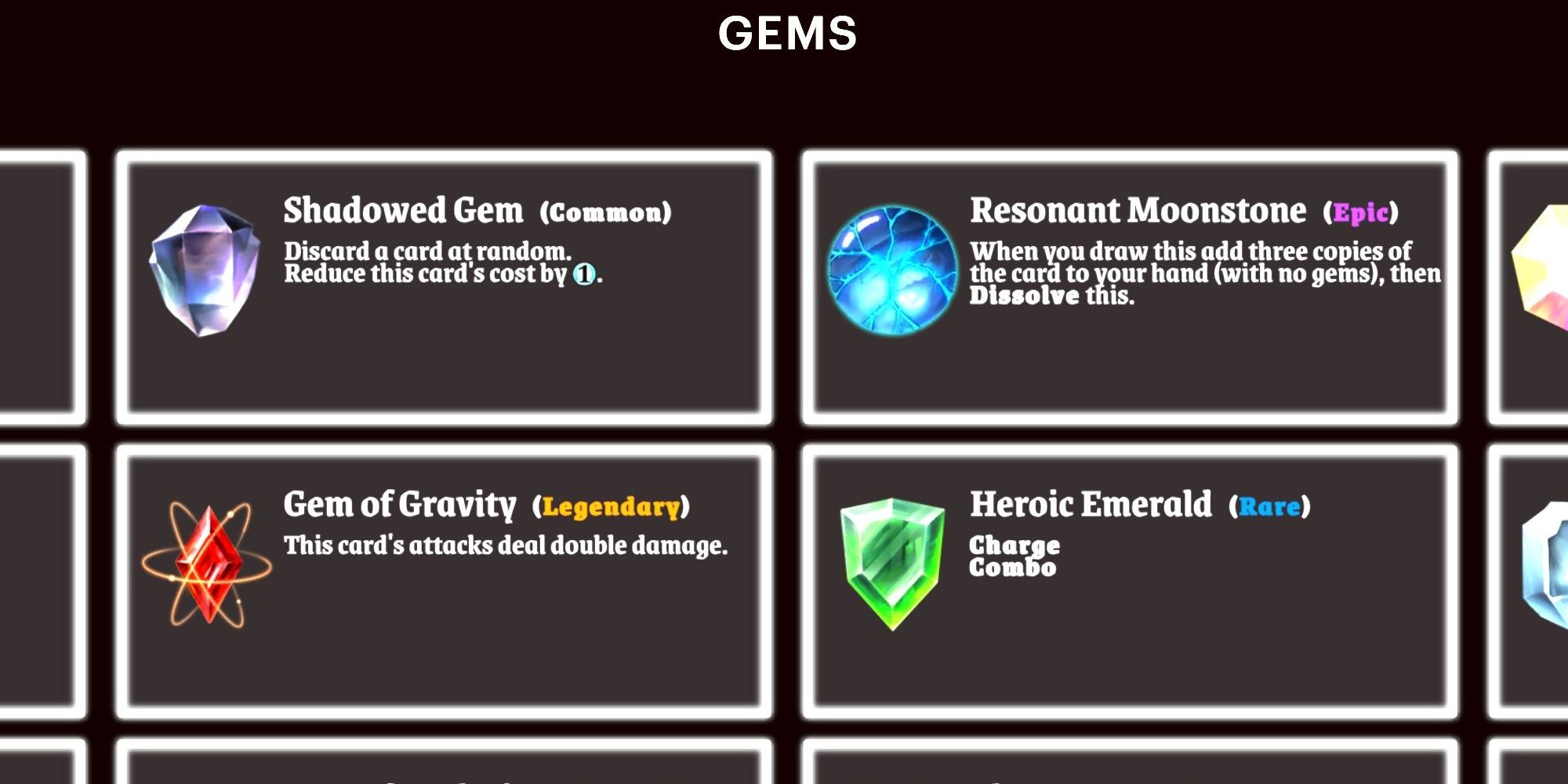
The game has the player sort through gems of 4 different rarities that determine the potency of the gem's effect when applied to a card:
- Common
- Rare
- Epic
- Legendary
A gem that provides extra damage to a card will boost damage higher if the player has the legendary variant of rather than the common or rare version. It can also mean a gem's effect is more exotic and interesting. A common gem may add an extra 4 block, while a legendary gem may convert block into damage.
It isn't like how defense works in Pokemon, where the card only needs a high defense stat. These are hard numbers that change based on cards played. Rarities make obtaining gems more difficult; naturally, a legendary gem costs more to buy in a shop than a common gem.
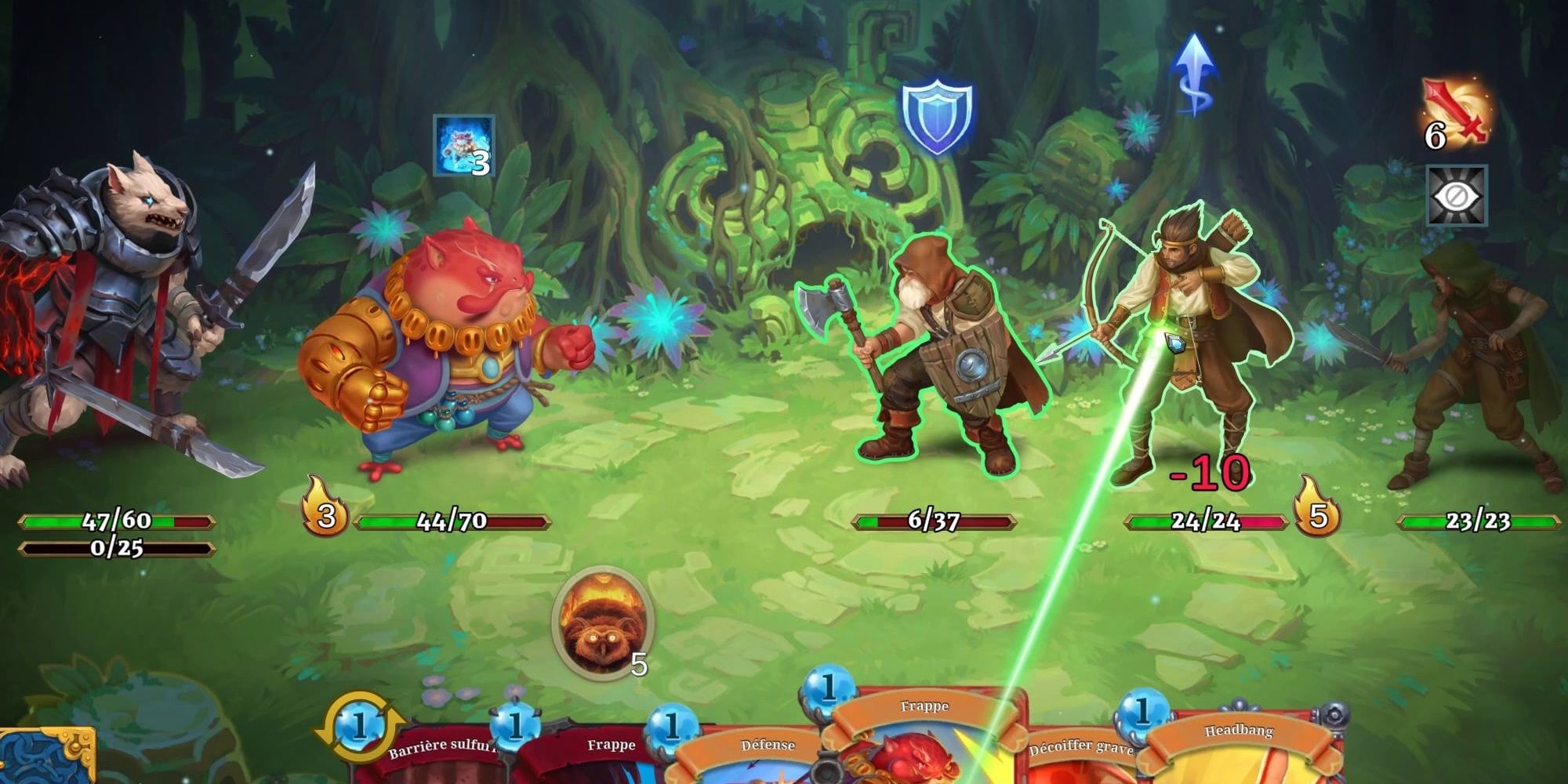
Gem effects vary widely. Some are common, easy-to-understand upgrades and simple stat boosts. Others, however, are better used in more specific scenarios. It is one thing to increase the damage of a card by 5, but if the card in question is dealing enough damage already, it may be wiser to install a gem that causes the card to attack for double damage. The game offers nearly as many modifiers as Magic Legends, so players should take advantage however they can.
There are even cards for driving down the energy cost of a card, or for modifying the player character themselves. They can be broken up into gems that can do any of the following:
- Boost stats
- Control the movement of cards
- Modify energy cost
- Apply bonuses to the player character
- Control the nature of an attack
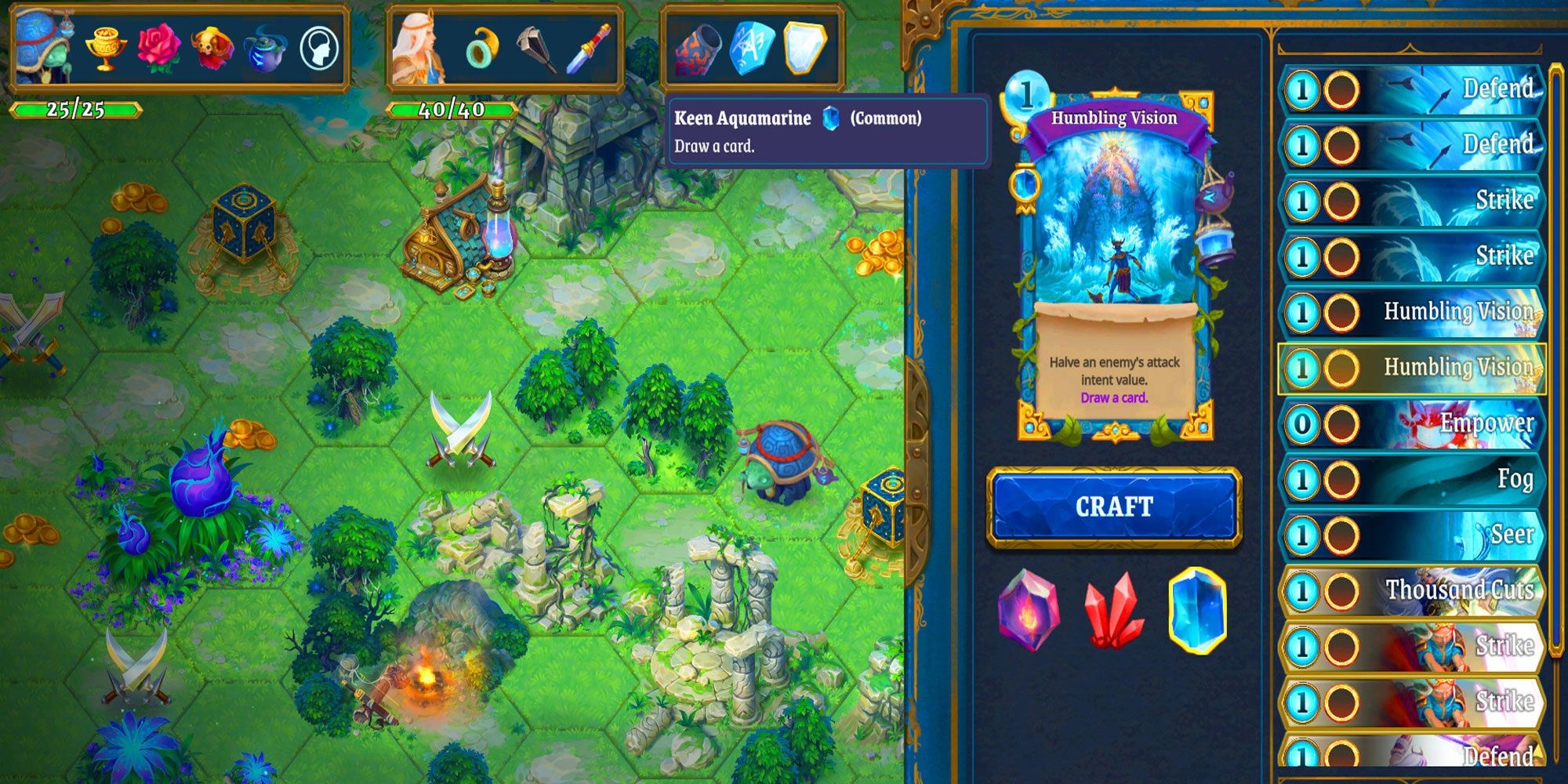
Gem slots are the ultimate limiting factor in what players can or cannot do with gems. Each card has a certain number of gem slots that dictate how many gems they can have equipped. However, it is quite unlike the slot system found in Loop Hero.
Cards will most commonly have only one gem slot, but they can also have two gem slots or none at all. It is up to the player to decide what to do with this limited amount of space, as a gem cannot be removed from a card once it has been placed.
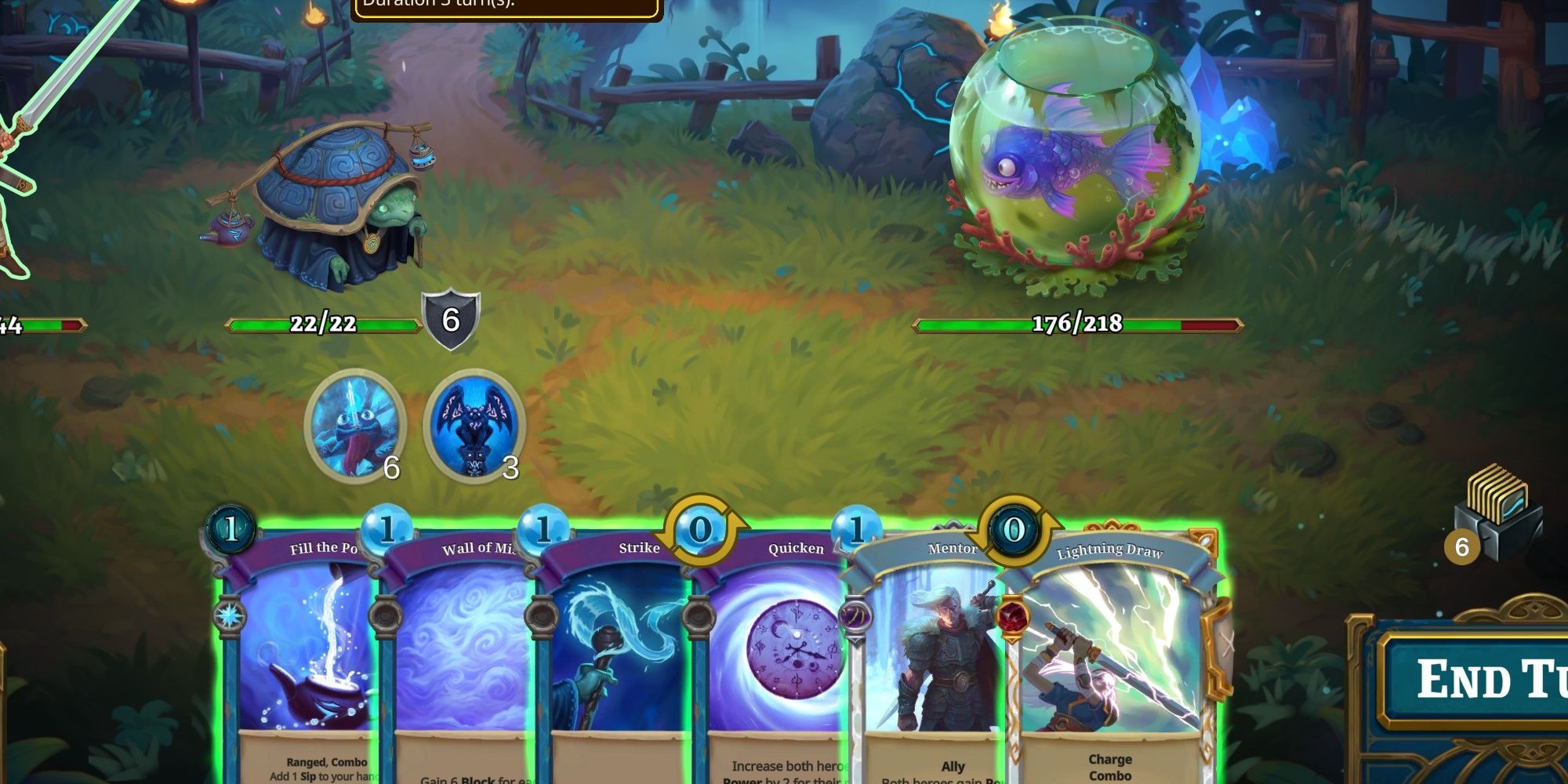
Anyone familiar with the deckbuilding genre will be familiar with the concept of synergy. In essence, it is the practice of managing a game in such a way that all of the tools at the player's disposal compliment each other, resulting in a specific playstyle that they cater to for that run. Similar concepts about playstyles can be found in most Roguelikes, like Minecraft Dungeons.
It is up to the player to invest in cards that adhere to their desired playstyle, and gems are what take that investment to the next level. If the player has invested heavily in a deck that causes their enemy to bleed, it may be in their best interest to add a gem to one of their cards that inflicts bleeding equal to the damage dealt.
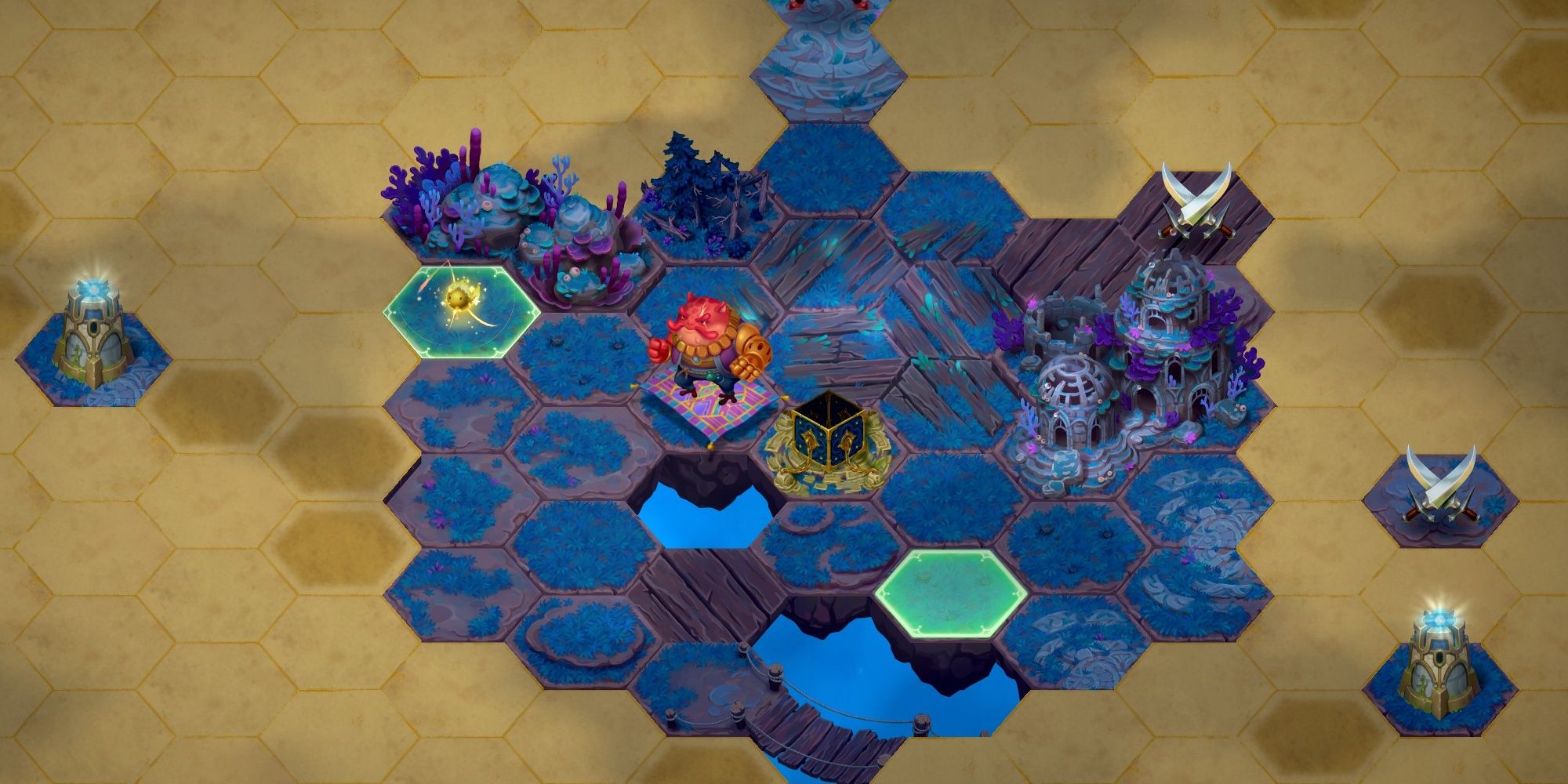
Each character has its own strengths and weaknesses. These strengths and weaknesses must be taken into account when the player is deciding what gems to use.
For example, the character Sorocco has the ability to gain extra block when he is at the front at the end of the turn. This makes him especially qualified to act as a tank, absorbing damage for the sake of his teammate. On the opposite end of the spectrum are characters who focus more on dealing damage. Therefore, pursuing gems that help such characters fulfill these roles is a factor the player must understand if they wish to be successful.
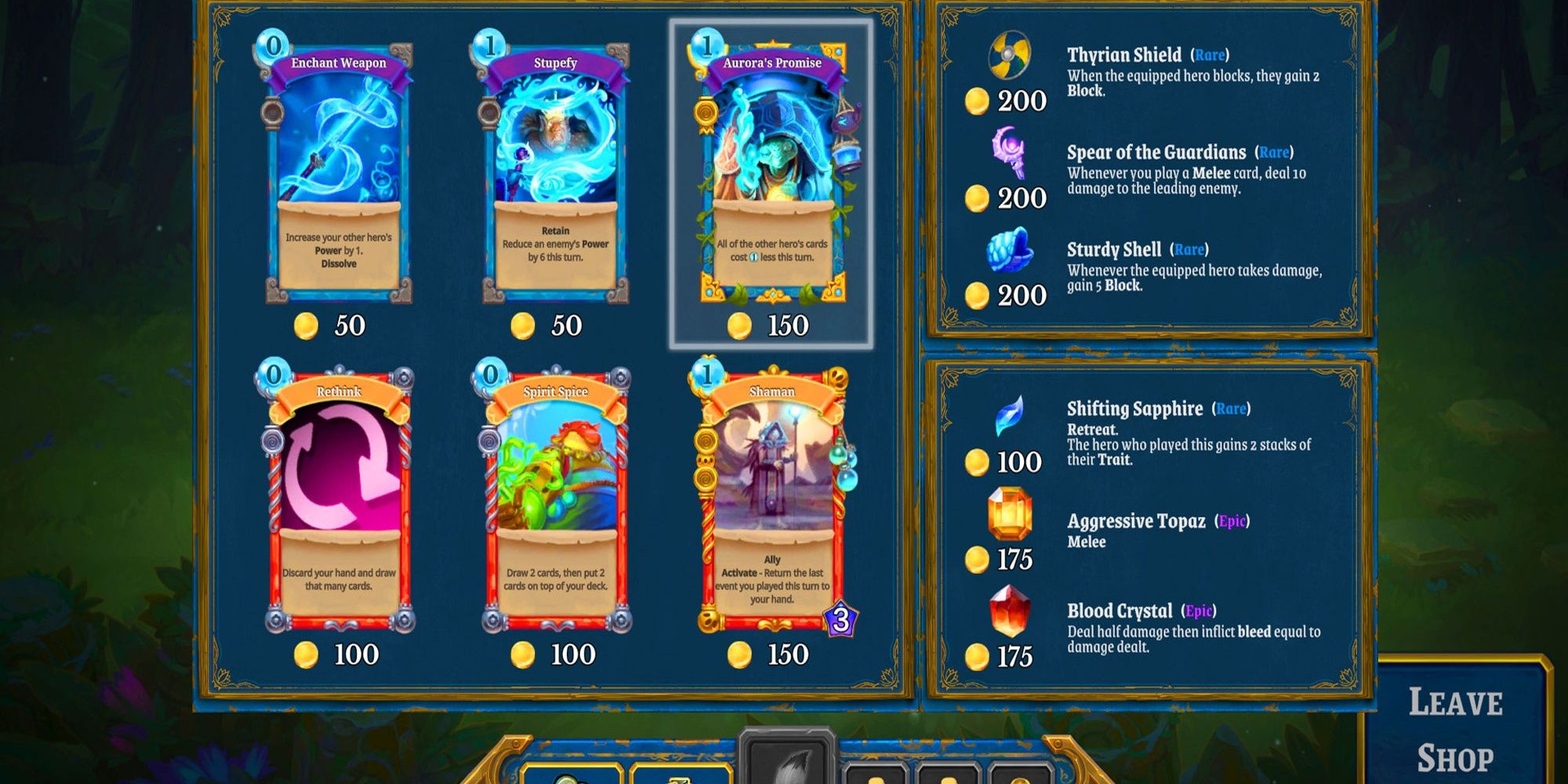
There are a variety of ways that the player can obtain gems throughout their game, as listed below:
- Luck is always a factor in determining which gems appear.
- Gems can be purchased from stores, costing more based on rarity. Remember that the selection of gems changes after entering a new area.
- Players can obtain them by finding Gem Stones on the world map.
- They can be picked up during eventscalled a narrative.
- Defeating the boss of an area will always grant a choice between a set of cards or a gem.
- The player can receive a gem after a battle with an elite enemy.
- Alchemists will give the player a card with a choice between three gems, in change for one of the player's cards.
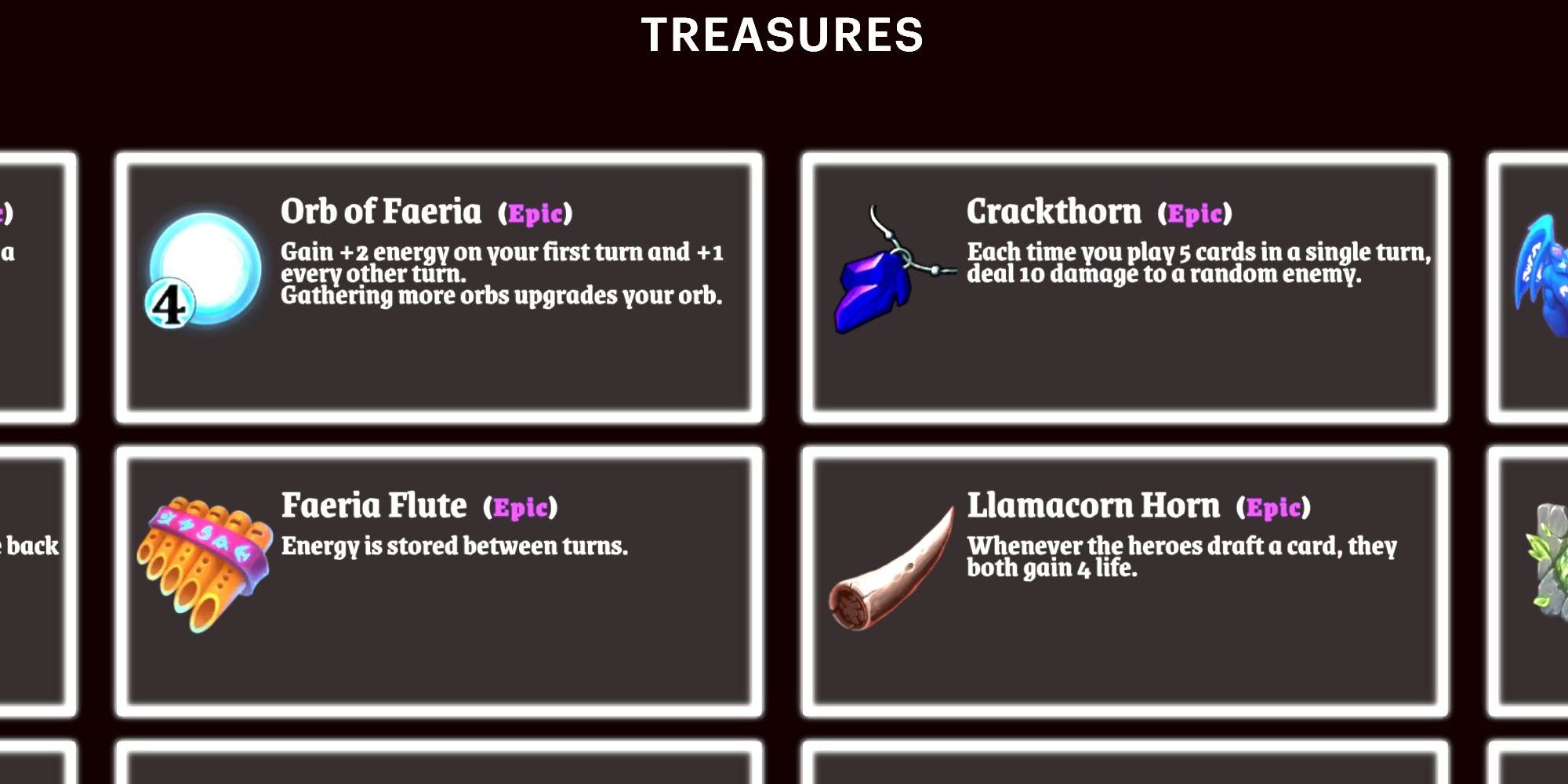
Treasures are similar to grafts from Griftlands in that they are allowed to do more wild things, and do not need to be attached to a card. One such treasure, Jalmyr's Tablet, reveals the location of Alchemists on the world map and makes them all free. To reiterate, Alchemists can give the player a gem if they remove a card from their deck, so being able to use them with ease is a major plus.
Meanwhile, the Gabrian Compass will reveal the location of an undiscovered Gem Stone whenever the player uses a Rune Of Sight. For more general use, there are also treasures that aid the player in revealing more of the world map, which inherently increases their chances of finding a gem.

Post a Comment